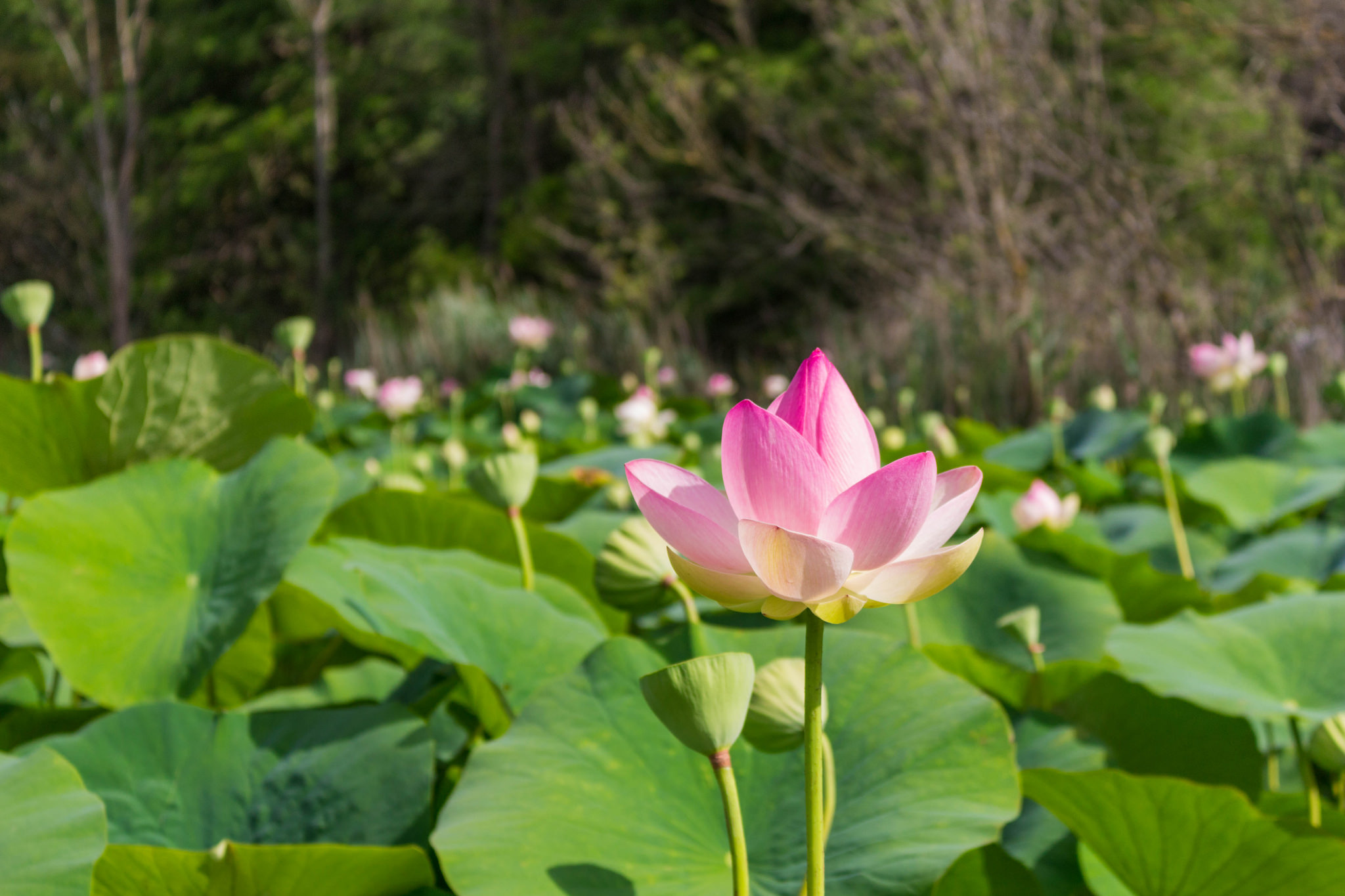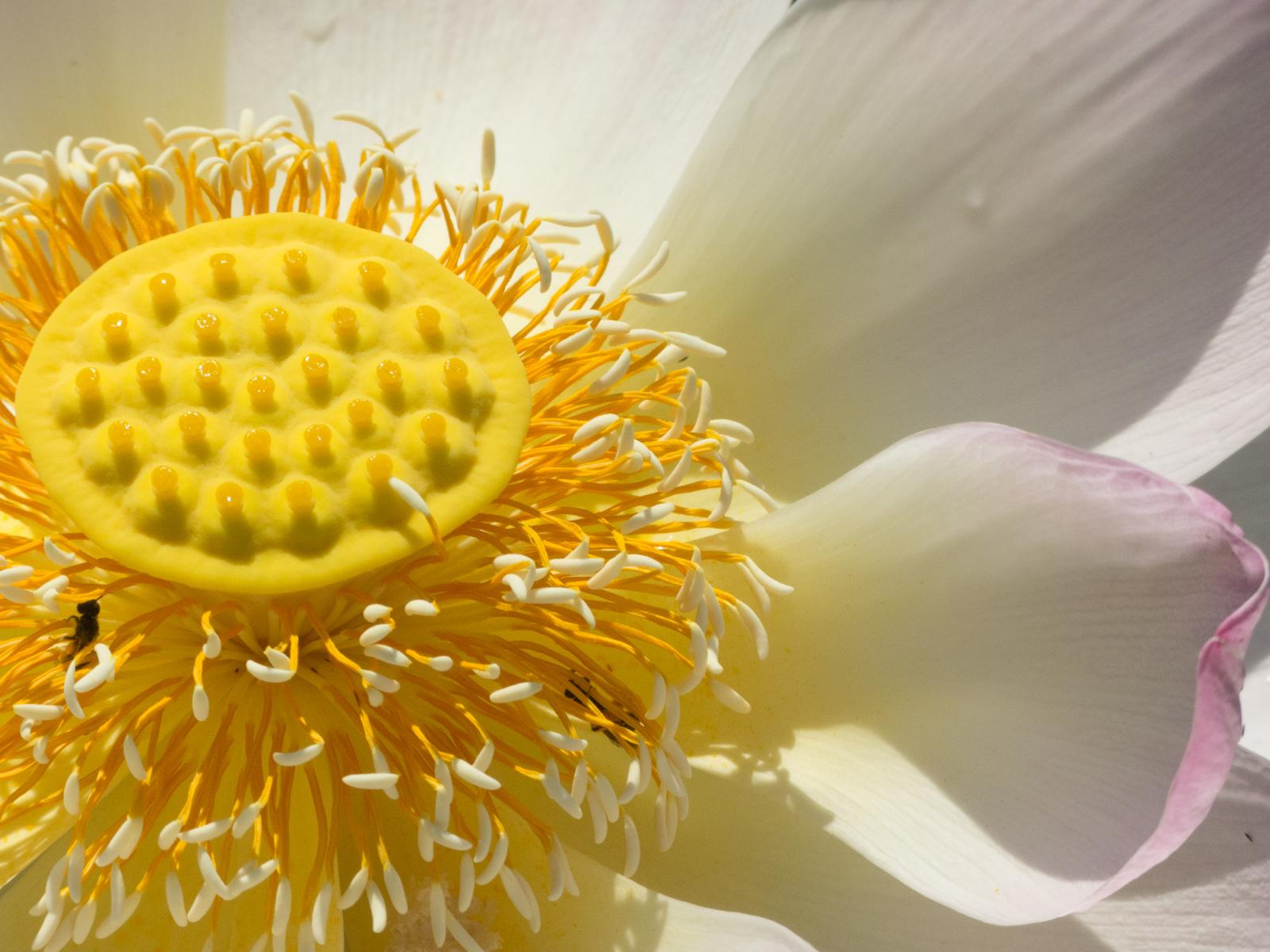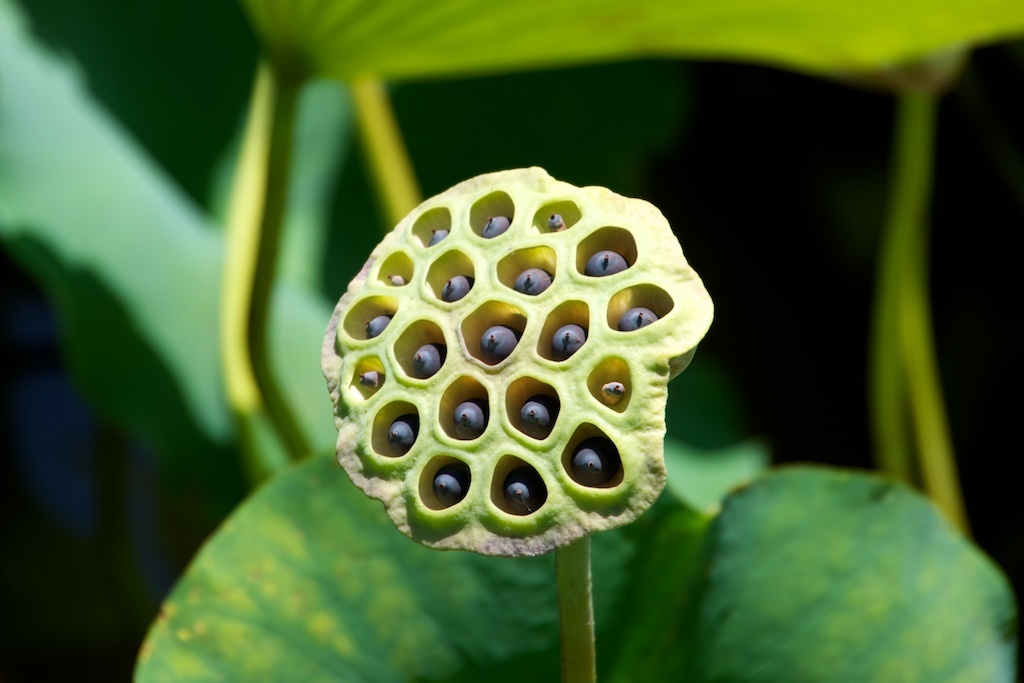The Medicinal Wonders of Lotus Flower
A visual treasure awaits those who make it to the National Park of Valmasques in the South of France each summer. Nestled close to the village of Mougins– which is not far from the beaches of Cannes– thousands of blooming, pink-tipped lotus flowers anticipate visitors’ wide-eyed gazes.
Blooming between July and mid September, this is Europe’s largest display of the lotus and is open year round. L’etang de Fontmerle, or the less glamorously translated Fontmerle Pond, was originally planted with seven lotus blooms in the 1960s, when architect Maurice Gridaine owned the Manor home bordering the lake. The home is now a small hotel, and the roughly 500 square foot lake is overflowing with lotus as far as the eye can see.
The pond is a majestic site at any time of year, but spending time with such an abundance of these sacred plants in bloom offers a window into the spiritual presence of their magic. Pristine lotus flower heads shoot up from the deep belly of the muddy pond, which in its simplest spiritual interpretation offers connection between the earth and sky, darkness and light, and our own spiritual journey from ego to peace and enlightenment.
The pink tipped lotus (neulumbo nucifera) has been used as medicine in Asia, where it is native, for well over 1500 years. (A yellow version (nelumbo lutea), which is not traditionally used for medicine, is native to Florida.) All parts of the nelumbo nucifera varietal are used for food and medicine.
The perforated rhizome that grows in muddy water is commonly used in Chinese stir fries, and, when sliced and sautéed, has a crisp texture similar to jicama. If cooked for a little longer or added to soups and broths, the starches in the tubor begin to break down and a more slippery and sticky quality becomes evident. Texturally, its similar to a waxy potato but tends to be sweet in flavor. This range of qualities–wherein the plan can go from crisp to sticky– is somewhat paralleled to the medicinal benefits of the whole plant, which has the ability to balance fluids (astringing tissue that needs toning while moistening tissue that has been overly dried out).
In Traditional Chinese Medicine (TCM), the root is specifically used to treat a variety of blood disorders, from stopping excessive bleeding to moving blood that might be stagnant. (1)
A medicinal dose of lotus could be:
- 10-15 g of dried root simmered in a covered pot with a quart to a quart and a half of water for 20 minutes.
- Strain and drink the liquid throughout the day.
Rich in vitamin B. iron, vitamin C, phosphorous, copper, manganese, potassium, sodium and dietary fiber, its easy to see why lotus root would be nourishing to the blood– but its also a great addition to any healing diet, regardless of its typical medicinal uses. Keeping dried, organic slices of lotus root on hand is a great way to add nutrient-dense food to your kitchen apothecary– plus, it’s [easyazon_link identifier=”B005OMTOQK” locale=”US” tag=”gardcoll03-20″]easy to find online[/easyazon_link].
Medicinally, the lotus seeds are used for restoring vital force in the body and nourishing the essence or jing, as its known in TCM. Lotus seeds astringe excess leakage of fluids, so think about ways in which the body might lose fluids and you are starting to see the patterns where using lotus seed may be useful.
Used for diarrhea, loss of appetite, and also grounding and calming the emotional heart and mind, lotus is also beneficial when anxiety may be the source of disturbance. Herbalist Guido Masé, uses the seeds for clients who need to tone the cardiovascular system and also for the balancing of fluids in the kidneys. (2)
Nutritionally, lotus seeds are a rich source of protein and are typically made into soups or roasted with spices for a traditional crunchy Indian snack, phool makhana. When roasted, lotus seeds will become crisp and crunchy like popcorn. As a food, the leaves are also often used as an edible food wrap containing some form of protein, rice, and peanuts. The roll is then fully cooked in a bamboo steamer.
While it’s recommended that you consult with a practitioner before embarking on any new herbal or supplemental regime, its particularly important to highlight this point when considering the traditional uses for the lotus leaves: the leaves are used to calm the effects of summer heat, which would include excessive sweating, dehydration, and lack of urination. Seeking appropriate support from your primary care physician is advised if you are experiencing any of the symptoms described.
The Cote D’Azur is filled with a bounty of things to do, taste and experience, but if you do have time to make the trip to L’etang de Fontmerle, you will be rewarded by a visual symphony, whether in bloom of not, and an incredible opportunity to have a close up look into the wonder and mystery of the Lotus.
Key
(1) Chinese Medical Herbology and Pharmacology by John and Tina Chen.
(2) Personal notes from Guido Masé’s 2015 lecture on Cardiovascular Health at the International Herb Symposium
Dawn Petter is a practicing herbalist living and working in New York City. She is the founder of Petalune Herbals, and more information on her services, workshops, and class offerings can be found here.





































